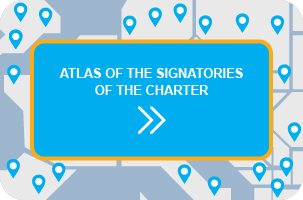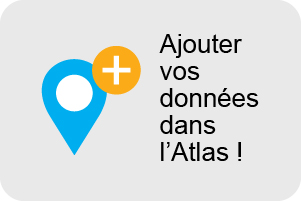Urban planning on girls conditions
In 2010 the City of Malmö started a large project to develop new “socially friendly” pedestrian and cycle paths connecting the central areas of Malmö with the socio-economic less advantaged suburb, Rosengård. The project was financed by the European Regional Development Fund and the Swedish Delegation for Sustainable Cities. A main component of the project was to engage inhabitants through active citizens’ dialogue in order to provide opportunities for residents to take part and influence their local environment.
As a part of the project, an old parking lot would be transformed into an activity space for young people. When the first sketches were drawn, these were based on typical images of what kind of physical activities an urban space should offer to young people; possibilities for skating, climbing and painting graffiti. However, when looking at the targeted audience for such areas, surveys show that they are predominantly used by young men and boys. This raised the question of who the city was making the plans for. After some research, it appeared that the leisure activities provided for youth was mostly used by young men and boys; whereas only 10-20% of the visitors were girls. When it came to sports, the patterns were similar: only 2 out of 19 sport teams in Rosengård were girls’ team. Even through simple observations of the outdoor environment, it was clear that men dominated in the outdoor urban spaces.
It was decided that the new activity area of Rosengård would make an effort to contribute to make it a a more gender balanced area. The project decided to focus on involving young women and girls from the neighborhood since this group is often neglected, both in statistics and in media. Other priorities were focusing on sustainability and improvement of the participation processes allowing citizens to get involved.
An advocacy group of young women was then established to contribute with ideas on activities that could be organized in the space. The group called for more cultural activities related to music and dance rather than physical activities. As a second step, a group of stakeholders composed of local associations and small businesses became involved. These groups were responsible for planning the programme of activities and also had direct influence on the spending of the budget. The idea was to build upon the engagement mobilized through the planning processes so that activities offered in the area would be managed and maintained by the users themselves (i.e. the residents in the neighborhood).
The approach showed to be successful and throughout the year, young people from different groups participated in the preparations and arranged various activities such as movie screenings, a festival on sustainability and a Christmas market.
Moreover, the name of the space “Rosens Red Carpet” was the winning proposal in a competition organized in the suburb as a further way for inhabitants to take ownership of the space .
The contribution from the group of young women was acknowledged by media and generated a public debate on the importance of including gender equality in urban planning. When the project came to an end, the group of young women wanted to continue their work and started their own advocacy group “Engaged in Malmö” (EIM). This group continues to organise public events, helping other girls to implement their ideas and encourage citizens to participate in the urban planning of the city.
The City of Malmö hopes that this new type of collaborative working processes can be a model for future work, both on Gender equality and social sustainability, in Malmö and in other municipalities.
Rosen’s Red Carpet shows that we constantly need to remind ourselves that gender is not an integral aspect that is automatically taken into account in the planning processes. Instead, it requires an active questioning of the existing norms. When we think that we are planning for ‘everyone’ or ‘the general public’, this might not be true. Instead, it is very likely that large groups are not considered. Besides, equality and social inclusion are not concrete concepts; instead they require a continuous process of reflection.
For more information about the project please visit (information in Swedish):
- “Hallbarstad.se” (sustainable cities)
- Malmo.se (website of the City of Malmö)













